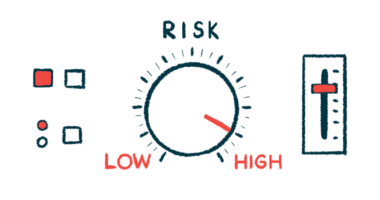Rituximab, MMF may be effective off-label options for NMOSD: Study
Treatments offer alternatives to patients unable to access approved therapies

Rituximab and mycophenolate mofetil (MMF) may be the most effective off-label options for neuromyelitis optica spectrum disorder (NMOSD) patients who are unable to access approved therapies, often due to high costs or limited availability, according to a study in China.
The study compared the safety and efficacy of four immunosuppressive therapies commonly used off-label in NMOSD: tacrolimus, mycophenolate mofetil, azathioprine, and rituximab.
In settings where patients are not able to access NMOSD-approved therapies, rituximab and mycophenolate mofetil may offer “superior treatment alternatives” compared to tacrolimus and azathioprine, researchers wrote.
The study, “Immunotherapy for neuromyelitis optica spectrum disorder: a comparative analysis of efficacy and safety of azathioprine, mycophenolate mofetil, tacrolimus, and rituximab,” was published in Frontiers in Neurology.
Fewer NMOSD relapses observed with rituximab, MMF
In NMOSD, self-reactive antibodies drive damage to the eye nerves and spinal cord, causing symptoms like blurry vision, muscle weakness, and numbness or loss of sensation. Patients diagnosed with NMOSD often experience relapses, or periods when symptoms worsen or new ones appear.
While four biologics — therapies derived from living organisms — have been approved to date as NMOSD treatments and are becoming the standard in many countries, “the widespread clinical use of biologics has been limited by issues of accessibility and cost,” the researchers wrote.
“In China, many patients are not covered by insurance for these treatments, leading them to opt for more affordable off-label drugs,” the researchers added.
To understand how these off-label treatments compare in NMOSD, the team of researchers in China looked at four commonly used ones: tacrolimus (sold under the brand name Prograf, among others), mycophenolate mofetil (sold as CellCept), azathioprine (sold as Imuran and others), and rituximab (sold as Rituxan, among others).
Unlike the others, which are taken by mouth, rituximab is infused directly into the bloodstream and is the only biologic of the four.
The study followed 213 adults with NMOSD who started one of these treatments. The researchers looked at how long it took for each patient to have their first relapse after starting treatment.
In the first year of treatment, rituximab and mycophenolate mofetil were more effective than tacrolimus. Those on tacrolimus were about 18 to 23 times more likely to have a relapse compared with those treated with rituximab or mycophenolate mofetil.
Azathioprine also did not perform as well as rituximab or mycophenolate mofetil, but the results weren’t strong enough to be conclusive.
The second year showed similar patterns, with rituximab and mycophenolate mofetil continuing to be more effective against relapses than tacrolimus and azathioprine. Rituximab and mycophenolate mofetil appeared to have similar levels of benefit.
Rituximab had lowest rates of discontinuation, switching
The researchers also looked at the annualized relapse rate, a measure of the number of relapses adjusted to a one-year window. All four treatments effectively reduced this rate, but rituximab and mycophenolate mofetil led to the lowest values: 0.12 and 0.15 relapses per year, respectively, versus 0.21 with tacrolimus and 0.19 with azathioprine.
When looking at the 81 patients with available data on disease activity based on MRI and clinical measures, the team found rituximab was associated with lower proportions of patients showing active disease relative to those on other treatments (26.1% vs. 51.7%).
Future studies should further explore comparisons between [approved biologics] and traditional immunosuppressants, as well as their efficacy and safety in different NMOSD subtypes and disease stages.
Patients on rituximab also showed the lowest rates of treatment discontinuation and switching to another therapy, with the most common reason being personal preference. In the group of patients on the other treatments, post-treatment relapse or perceived lack of efficacy were the most common reasons.
None of the patients in the study was hospitalized due to treatment-related adverse events, which were more frequent in the azathioprine and tacrolimus groups. This suggests all four treatments are relatively safe.
“First-line treatments for NMOSD … remain expensive,” the researchers wrote, adding that among these four off-label therapies, rituximab and mycophenolate mofetil “may be better treatment options.”
“Future studies should further explore comparisons between [approved biologics] and traditional immunosuppressants, as well as their efficacy and safety in different NMOSD subtypes and disease stages,” the team concluded.







